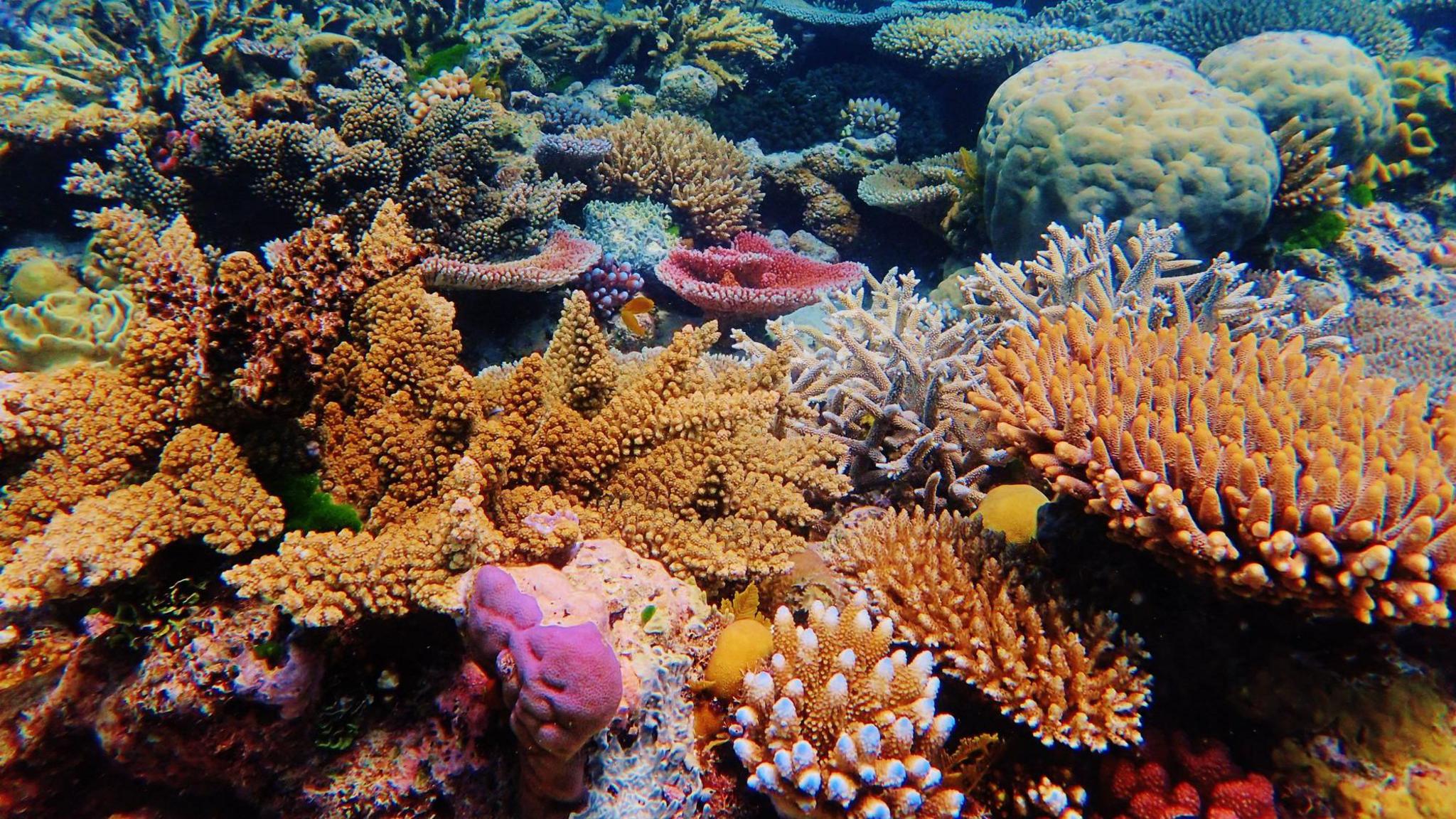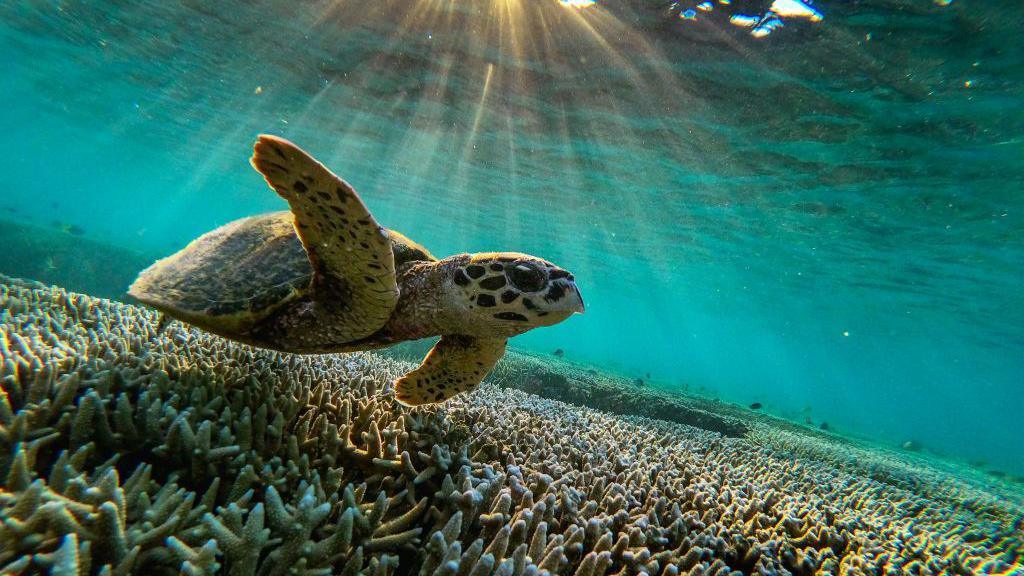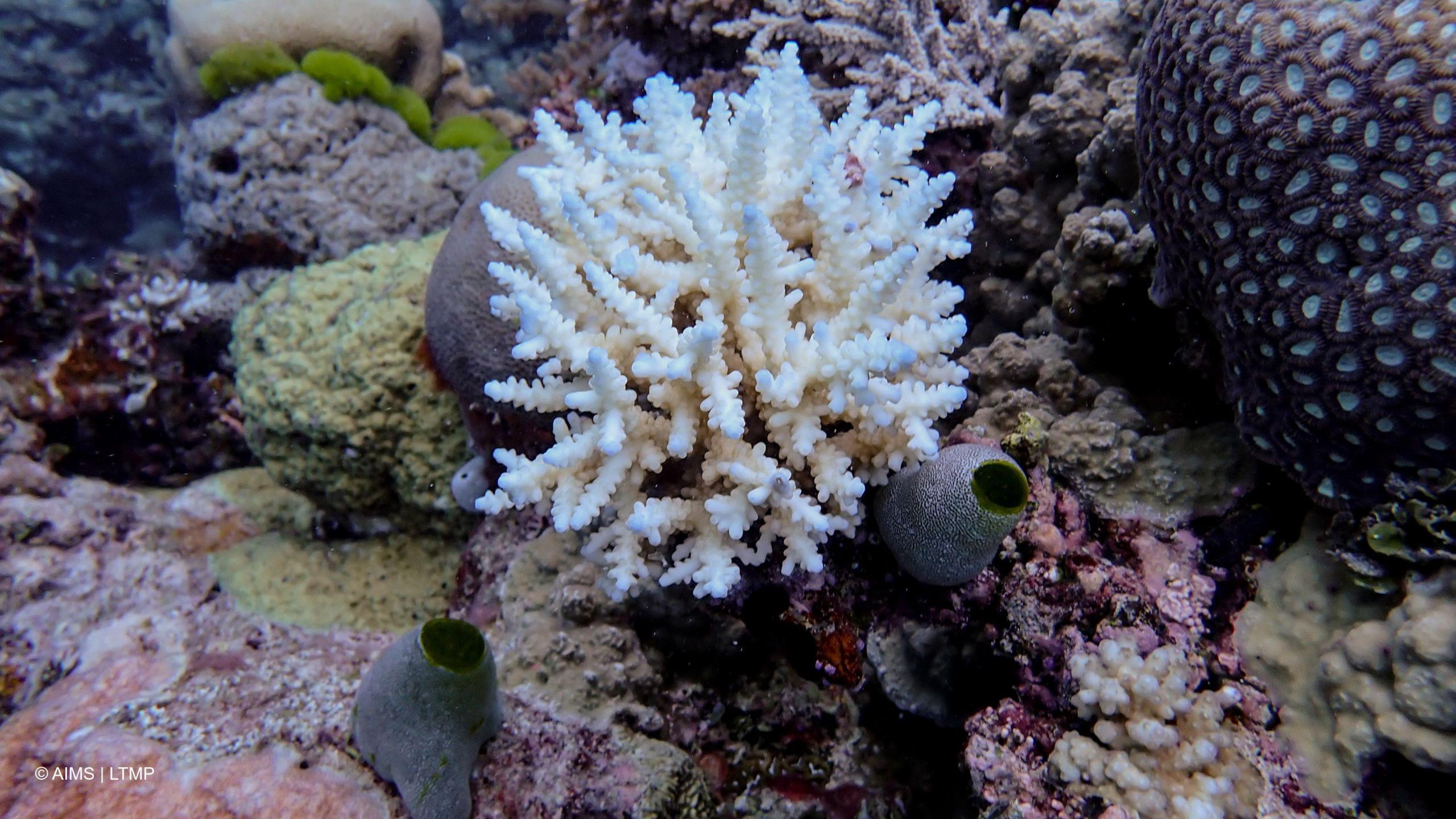Calls for rapid action to save Great Barrier Reef

- Published
Action is needed to reverse damage to parts of the Great Barrier Reef scientists have said.
The Great Barrier Reef in Australia is the world's largest reef and important to ocean biodiversity.
A new report found sections of the Great Barrier Reef have suffered the largest yearly decline in coral cover since records began nearly 40 years ago.
The Australian Institute of Marine Science (AIMS) said the Northern and Southern branches of the reef have suffered from coral reef bleaching.
"The Great Barrier Reef is such a beautiful, iconic place, it's really, really worth fighting for. And if we can give it a chance, it's shown an inherent ability to recover," report author, Dr Mike Emslie, told ABC News.
- Published7 August 2024
- Published13 March 2024
- Published9 April 2020

The Great Barrier Reef supports different kinds of ocean life
Although they looks like plants or rocks, corals are actually animals.
Coral colonies are made up of tiny animals called polyops.
Coral is vital to the planet and the structures provide structures a home to around 25% of all marine species.
The Great Barrier Reef is a 2,300km (1,429-mile) expanse of tropical corals that provides a home to a huge range of marine life.
Bleaching happens when coral gets stressed and turns white because the water it lives in is too hot.
Although coral can recover from bleaching events, if stressed coral continues to experiences high temperatures it can die.

Bleaching was recorded on several reefs throughout the Northern Great Barrier Reef
AIMS looked at the health of 124 coral reefs between August 2024 and May 2025. It has been performing surveys since 1986.
The Great Barrier Reef experienced the worst coral bleaching events ever in 2024 and in the first few months of 2025.
It was the sixth event in nine years.
As well as climate change, natural weather patterns have played a role in mass bleaching events, as have outbreaks of crown-of-thorns starfish that feast on coral.
In the latest AIMS survey results, the most affected coral species were the Acropora, which are susceptible to heat stress and a favoured food of the crown-of-thorns starfish.
